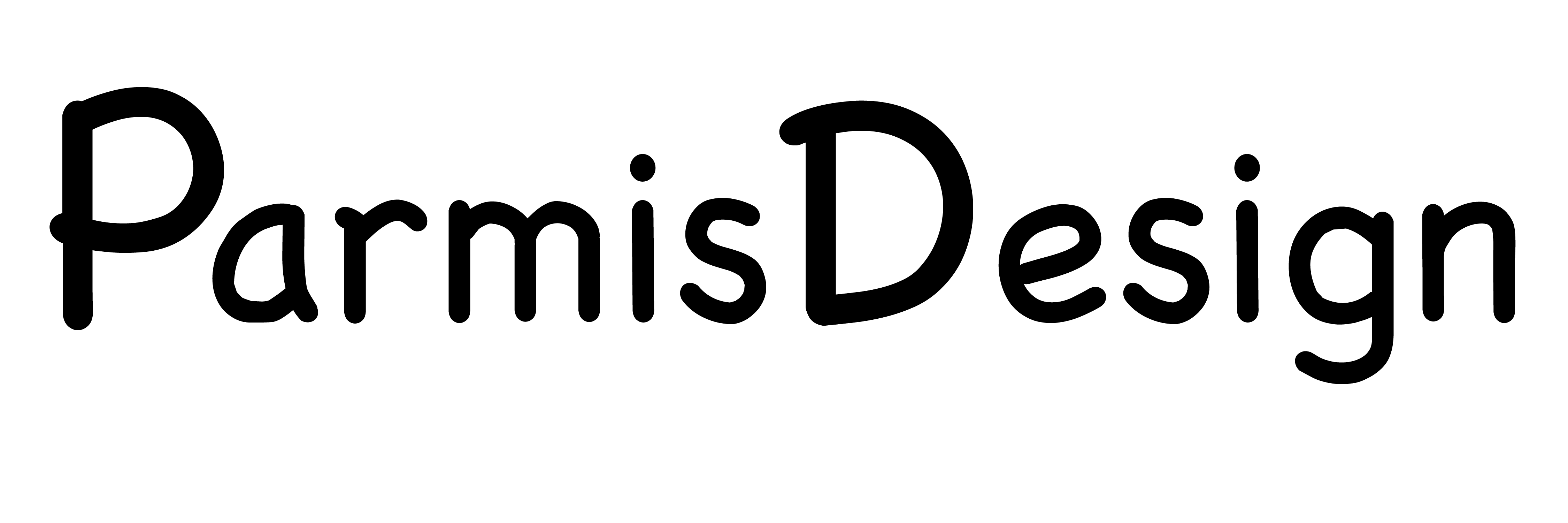UX Case Study – Havenly
Challenge: Discover pain points of the current app and propose solutions to improve user experience
Deliverables: Strategy. User research report. Persona. Task flows. Sketches. UI. Prototype.
Role: UX Designer
Havenly is an online interior design service that offers thousands of furniture ideas and personalized design help from professional designers. After talking to friends and interviewing users, I identified three main categories of the Havenly app :
- New Movers: Furnishing a new home and seeking a wide range of ideas and services.
- Casual Renewers: Occasionally upgrade a piece of furniture.
- Style Lovers: Constantly looking for new ideas and frequently shopping for small furniture pieces or decorations.
Process
For the initial user research, I conducted guerrilla usability testing to identify the existing issues. During the Analysis phase, I utilized affinity mapping to analyze pain points and establish priorities. Subsequently, I created task flows to pinpoint where users were encountering difficulties, followed by the development of low-fidelity sketches and high-fidelity prototypes. In the end, I validated the redesign with users, confirming that the pain points were resolved.
The project timeline is two weeks. Now, let’s delve deeper into each step.

Research
Guerrilla Usability Testing
I started by researching to understand Havenly’s business goals, revenue model, and target audience. During the testing phase, I interviewed 7 users to identify pain points with the mobile app. These users closely align with Havenly’s target market according to the similarweb analytics. 5 out of 7 are professionals with full-time jobs, and 3 of them are new users. 5 users had not used Havenly before. I assigned each user three different tasks to complete within the app.
1. Imagine you’ve just moved into a new home and want inspiration for your living room remodel. A friend mentioned the Havenly mobile app. Could you show me what steps you’d take?
2. Now that you’ve found some inspirational photos and have a few ideas, you’re considering buying decorative wallpaper to add character to your living room. What steps would you take next?
3. You’re out of ideas for decorating your living room and need expert help. A friend mentioned that you can find interior designers for home projects on Havenly. What would you do next?
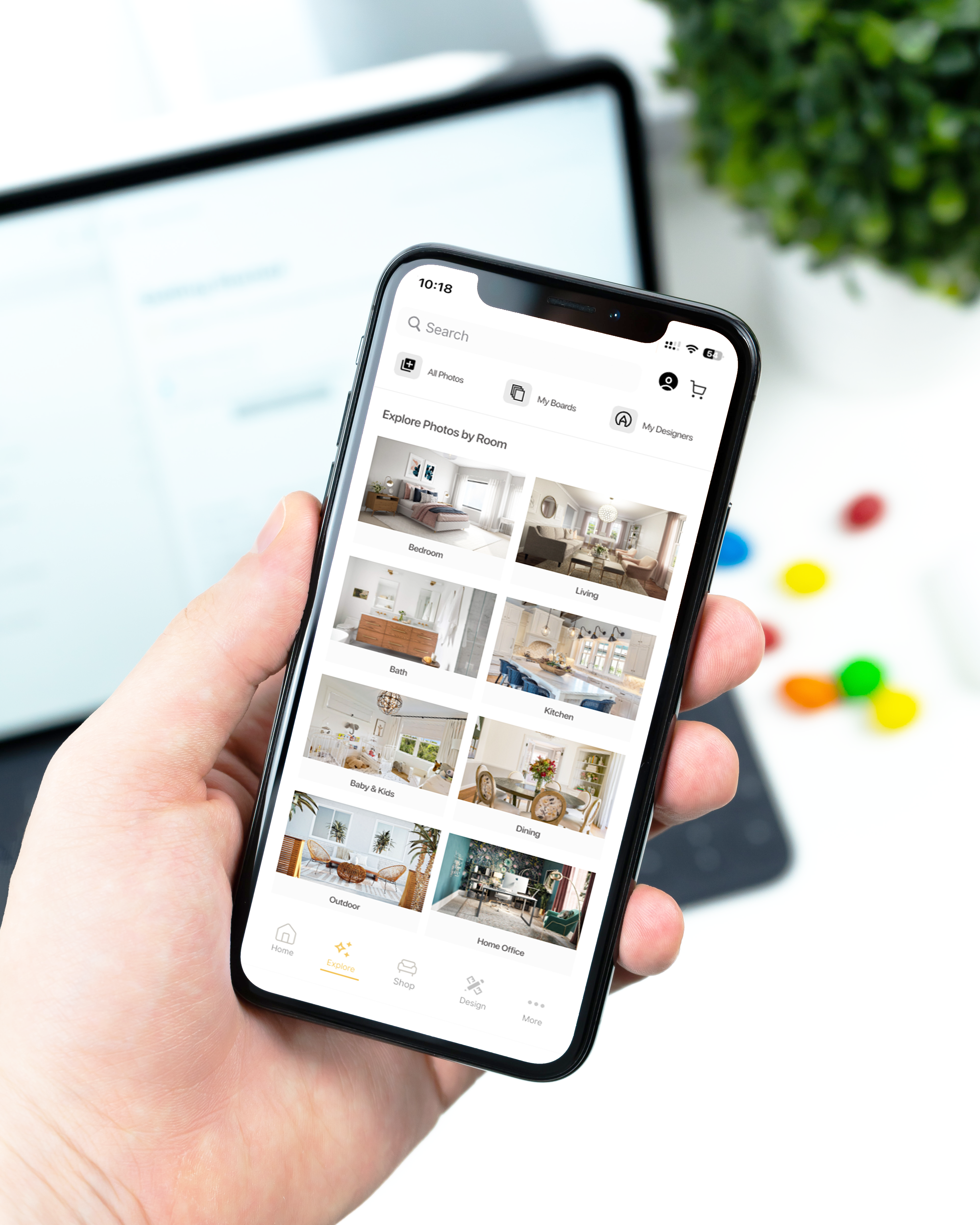
Analysis
From my user testing notes, patterns emerged, and I grouped similar pain points through affinity mapping. I categorized the findings based on Havenly’s core functions: getting inspired, exploring and shopping for products, and finding professionals. This helped prioritize the most impactful areas to focus on, which was crucial given the project’s short timeline.
Define
Based on the study, here are the 4 main problems I decided to focus on
- Lack of a Home Tab
- Issue: The app lacks a home tab, which is crucial for providing a clear starting point for users.
- Impact: Users lack direction and may struggle to understand the app’s value proposition and navigate it effectively.
- Messy Explore Tab
- Issue: The Explore tab is cluttered and simply lists photos without any organization or context.
- Impact: This disorganization makes it difficult for users to find relevant content or inspiration, reducing the app’s overall usability and effectiveness.
- Weak Flow and Navigation
- Issue: The app’s flow is weak, failing to provide a seamless experience from browsing to connecting with a designer. The purpose of “Create a Board” is unclear, leaving users lost after creating a new board as it provides no proper feedback, just a blank page without explanation.
- Impact: Users may find it challenging to navigate the app, leading to frustration and potential abandonment.
- Premature Payment Requirement
- Issue: The app asks users to pay upfront before offering any inspiration or connection with a designer.
- Impact: This creates a barrier for users who want to explore their options and understand the value of the service before committing financially.
These issues significantly impact user satisfaction and engagement, highlighting the need for improvements in the Havenly app’s usability and flow.
Lack of connections creates a barrier, more organized content about each categories,
This app focused more on just monetization, rather providing useful info which could lead to successful conversation
Persona
To communicate user insights from my research, I created a provisional Havenly user persona based on online research and feedback from friends and family. For a larger project, I would validate this with more extensive user interviews.
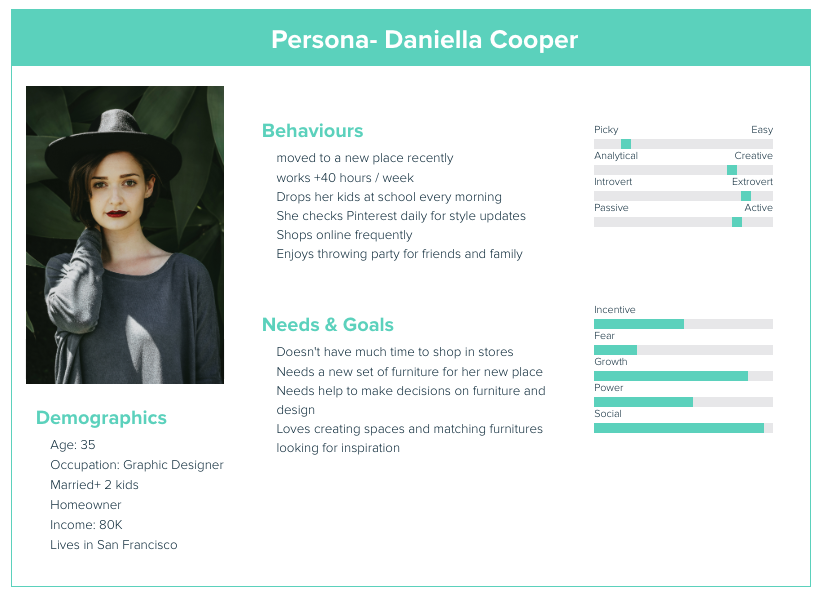
Ideate
Task Flow
I created task flows for steps a user typically goes through in order to complete two common tasks in Havenly:
- User wants to decorate a room and looking for inspiration
- User wants to find an interior design.
To better understand where in the process users were having trouble, I highlighted the areas in green where most users struggled, where I want to focus most during the redesign.
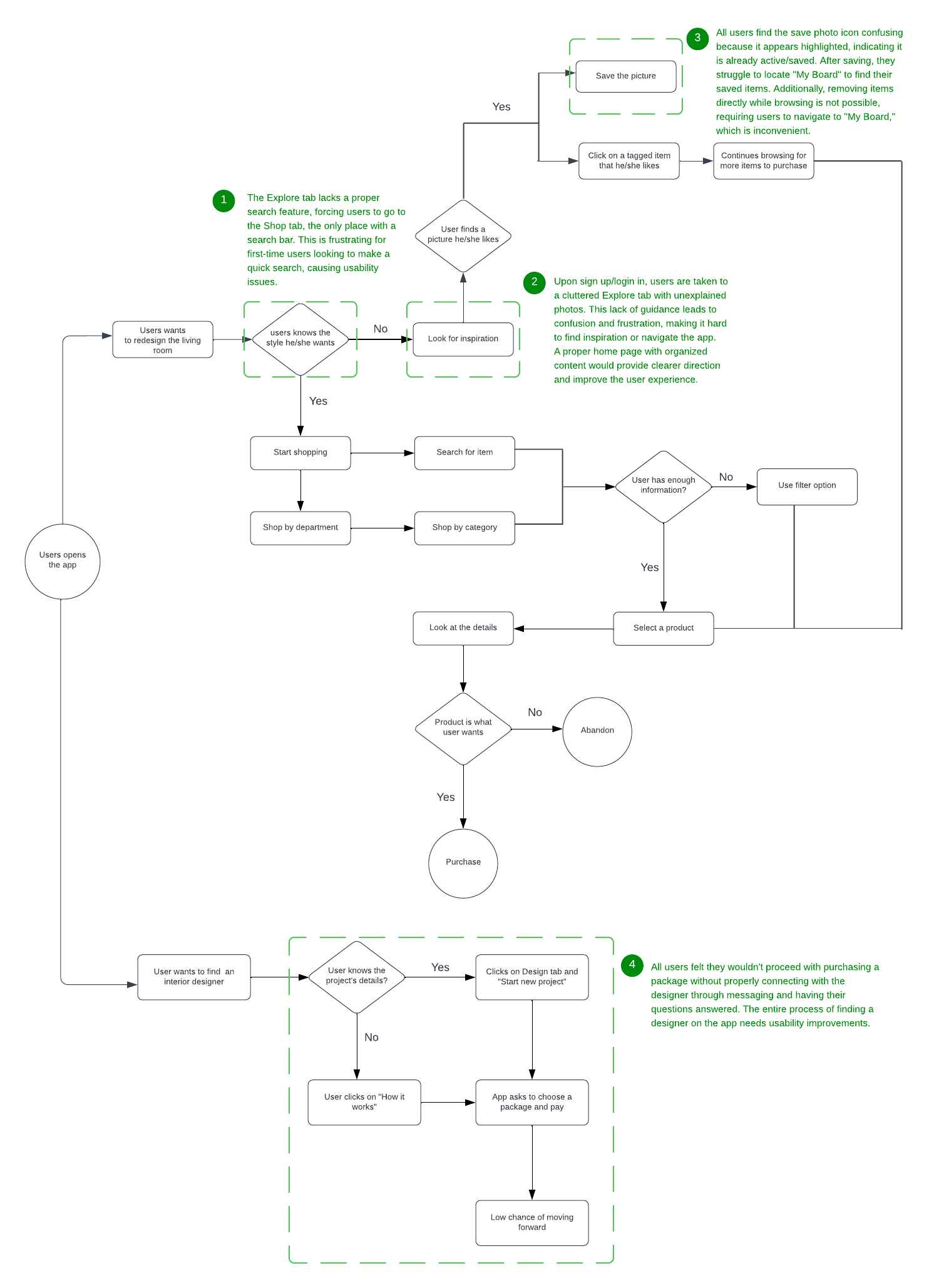
Lo-Fi Sketches
Identifying the pain points, I started sketching solutions on paper to freely explore ideas without being bogged down by details. My primary objective were:
- Create a strong Home page that offers inspiration ideas and enables users to navigate the site smoothly and intuitively from the start.
- Allow users to connect with an interior designer before making a payment.
Throughout the redesign, I consistently considered the target audience, company mission, and revenue model, with a focus on enhancing the user experience. After several iterations, I arrived at effective solutions.
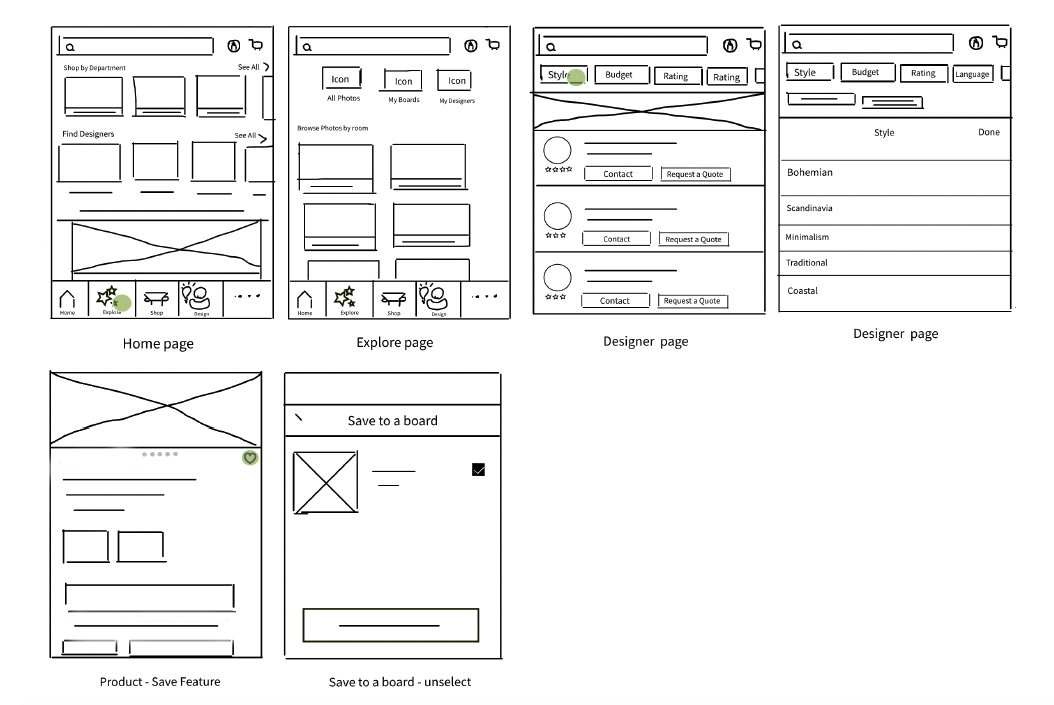
Hi-Fi Prototype
Moving forward with the process, I turned my Lo-Fi sketches into Hi-Fi prototypes. Below are the screen comparison showing before and after side by side.
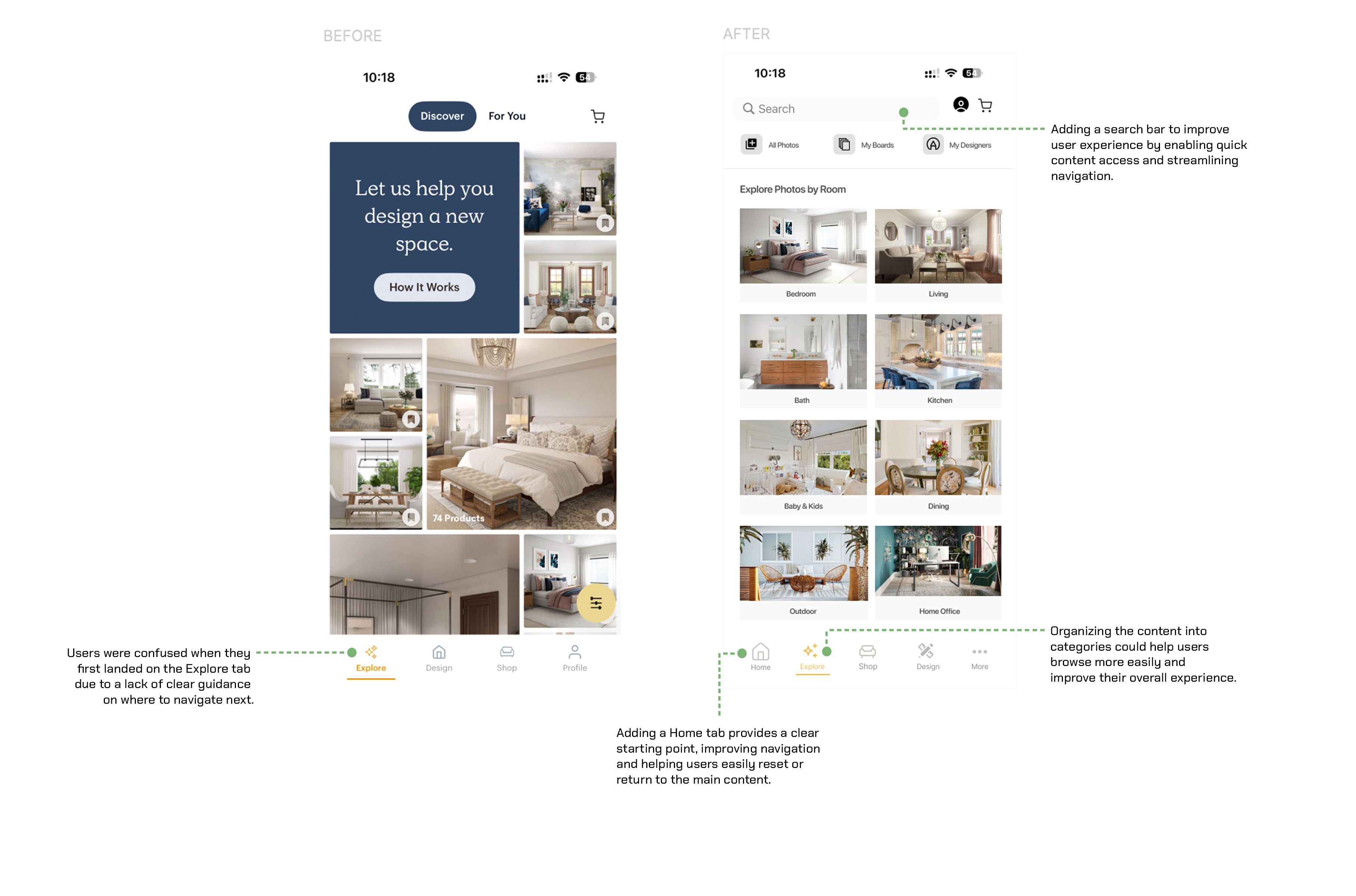
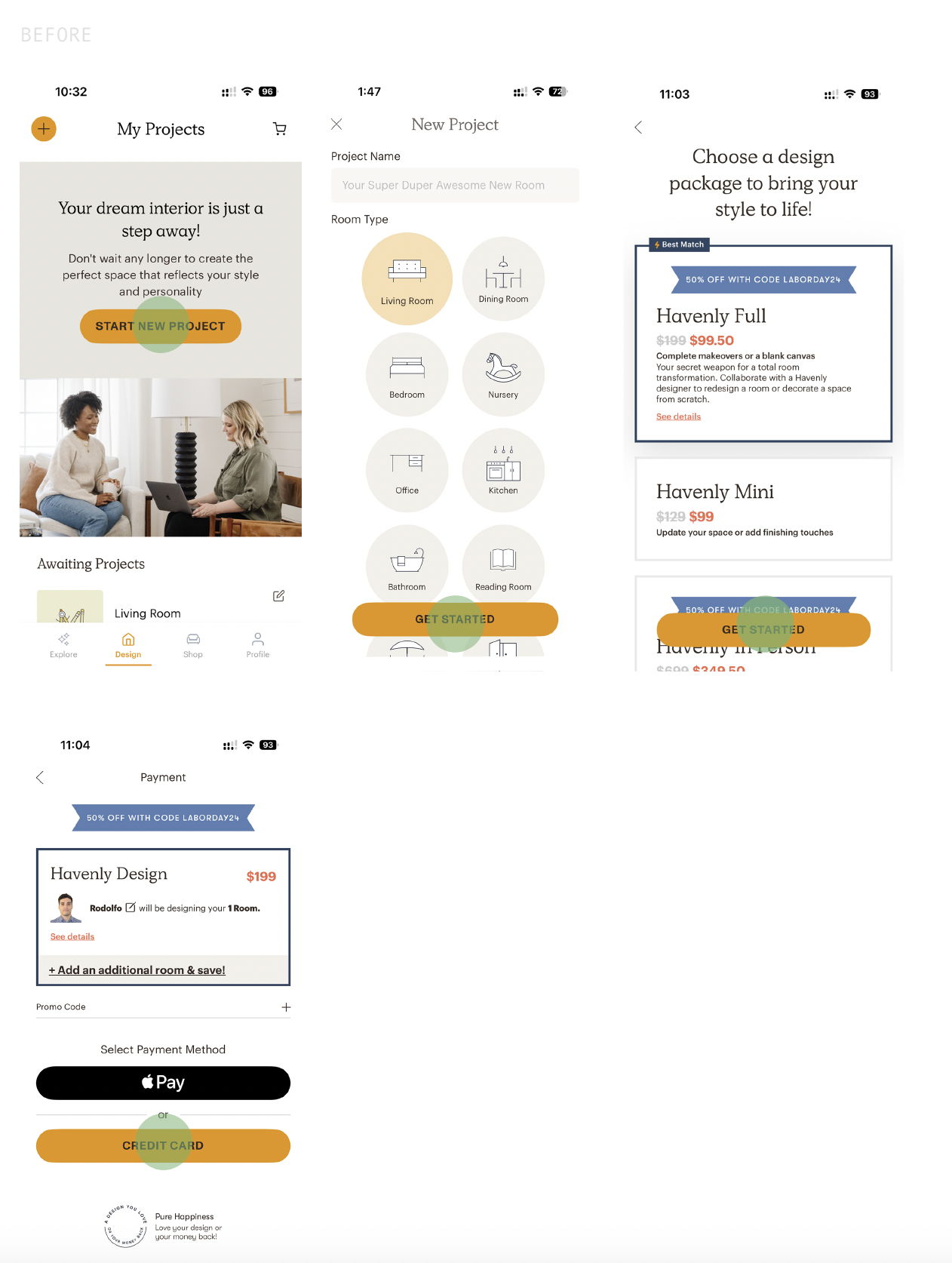
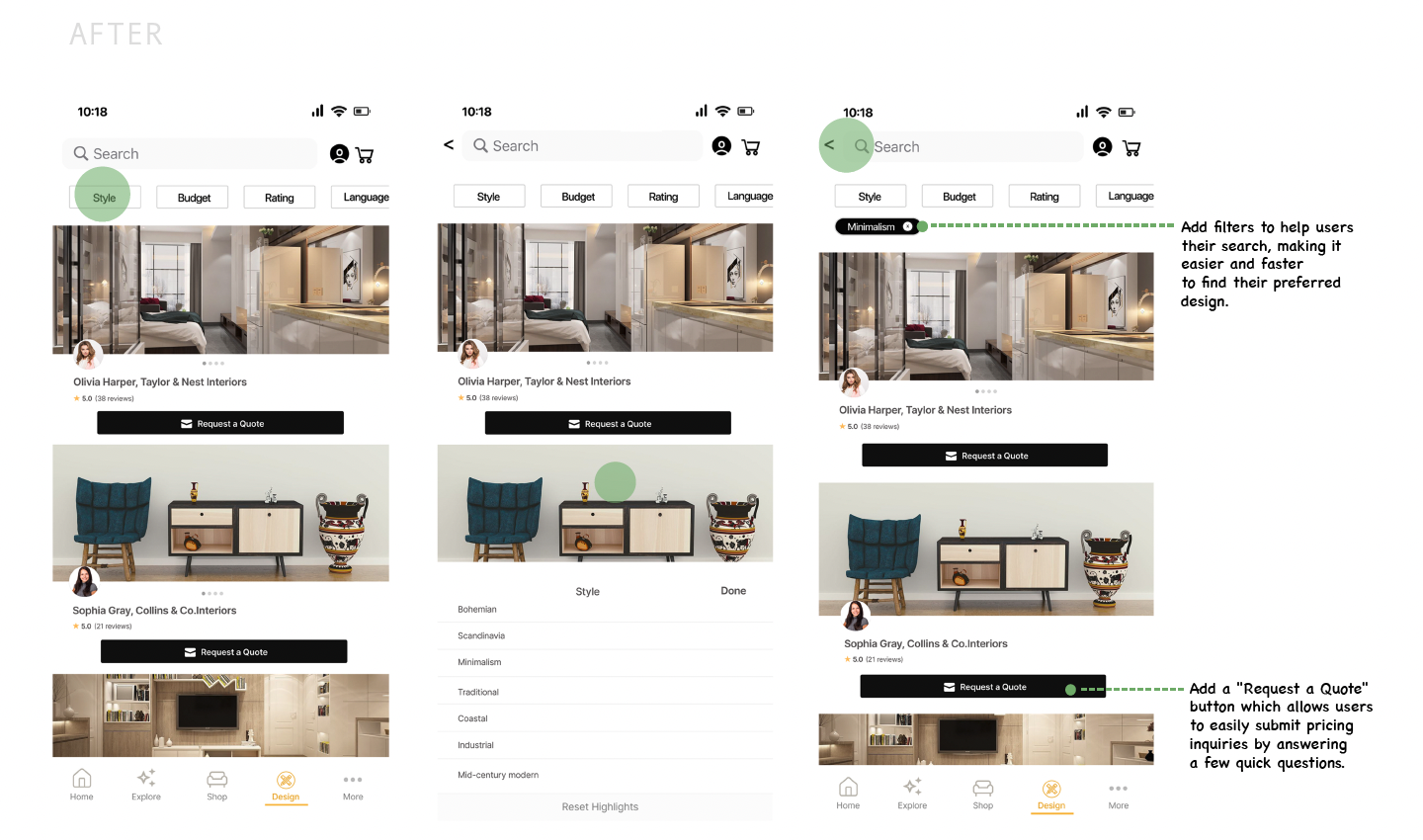

Validate
Conclusion
After two weeks of user research, analysis, and redesign, I validated my assumptions and changes by testing my clickable prototype with seven new users. The results are as follows:
- Finding inspiration: All 7 users located it on the home screen within 5 seconds.
- Finding Designers : 6 out of 7 users located it quickly.
- Selecting Designers: All 7 users easily sorted and selected Designers.
- Requesting a Quote: 6 out of 7 users clicked “Request a Quote” and found it useful.
Notes: For future studies, I plan to gather more data on how frequently users choose to call versus email when searching for interior designers, and how these interactions are perceived by businesses.
